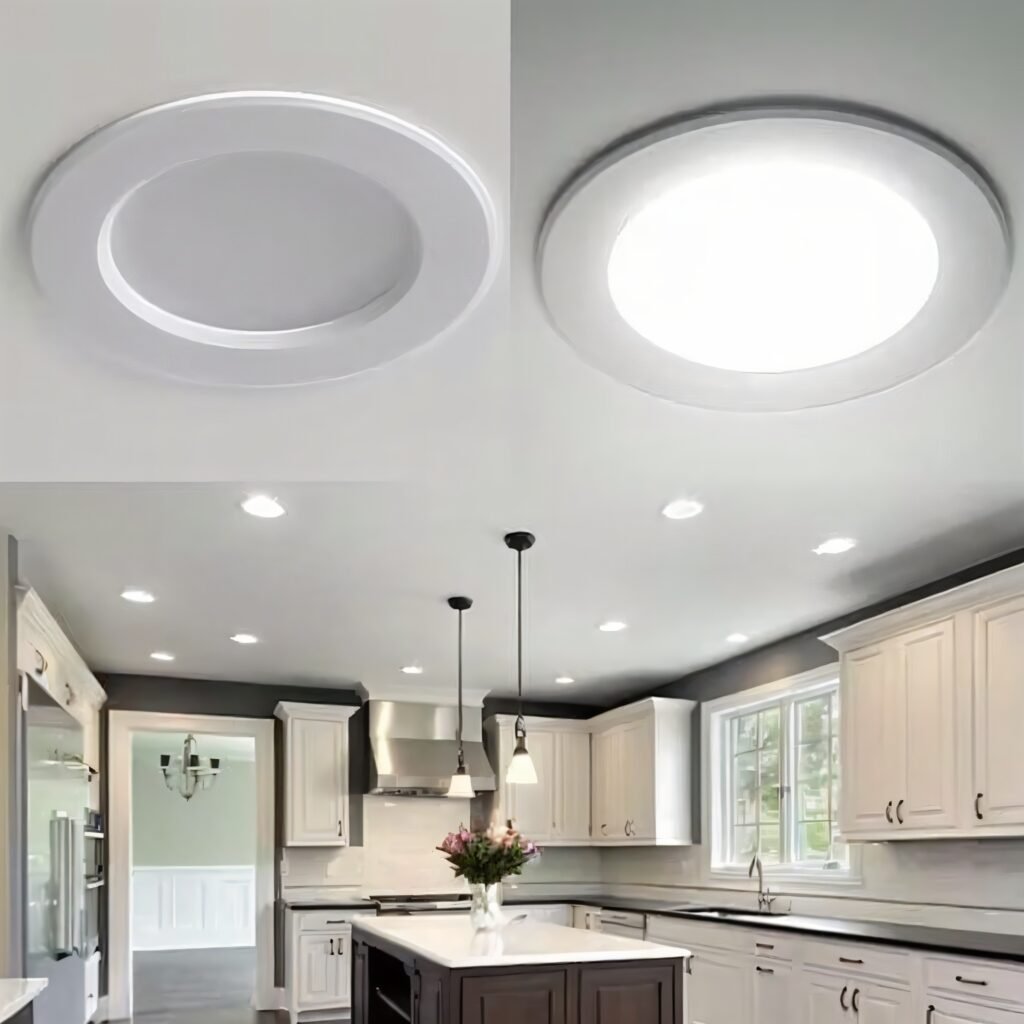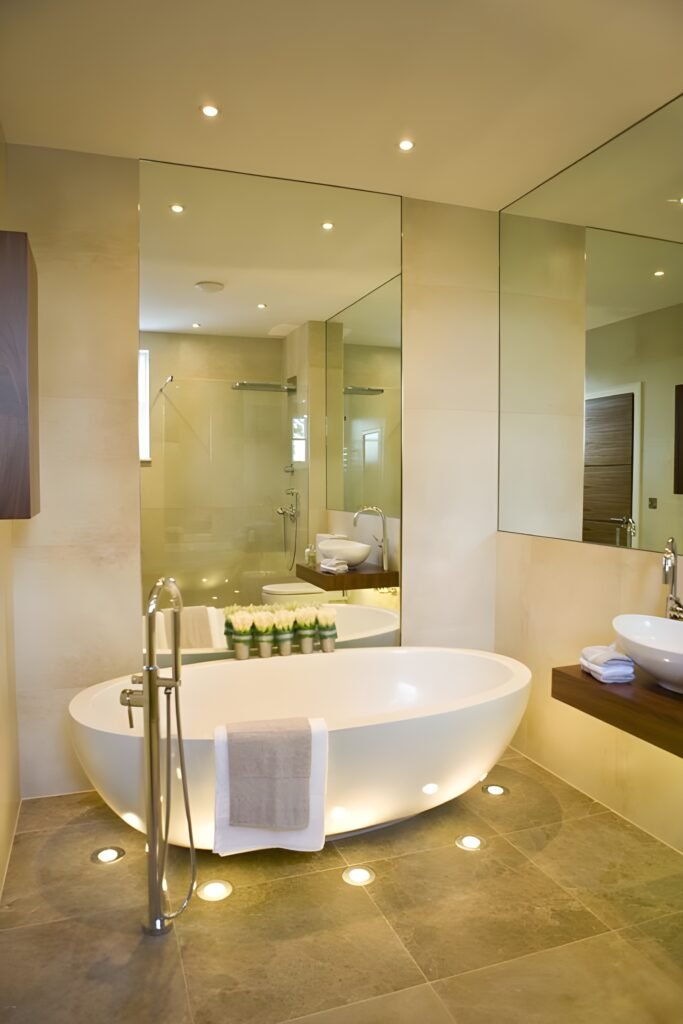When designing a modern home, integrating effective Architectural Lighting Ideas for Modern Homes is essential. The right lighting not only highlights architectural features but also creates a warm and inviting atmosphere. In this guide, we will delve into various Architectural Lighting Ideas for Modern Homes that can elevate your space, from cutting-edge LED solutions to traditional lighting techniques.
Table of Contents
The Role of Architectural Lighting in Modern Homes

Architectural Lighting Ideas for Modern Homes go beyond basic illumination. This type of lighting enhances the architectural elements of your home and creates a cohesive design that harmonizes with the overall aesthetic. Effective use of lighting can transform any space, making it more functional and visually appealing.
What Makes Architectural Lighting Essential?
Architectural lighting is crucial because it:
- Enhances Design: It accentuates architectural elements, making them stand out.
- Improves Functionality: It ensures that spaces are well-lit for various activities.
- Creates Atmosphere: It sets the mood and ambiance, contributing to the overall experience of the space.
Top Architectural Lighting Ideas for Modern Homes
1. Cove Lighting

Cove lighting is a popular choice among Architectural Lighting Ideas for Modern Homes. By installing LED strips or fixtures in recessed areas, such as where walls meet the ceiling, you can create a soft, ambient light that enhances the architectural contours of the room.
Benefits of Cove Lighting:
- Adds a subtle, ambient glow.
- Highlights architectural features without overwhelming the space.
- Provides even lighting that reduces harsh shadows.
Implementation Tips:
- Choose LED strips with adjustable color temperatures to match the room’s mood.
- Install dimmers to control the intensity and create different effects.
2. Recessed Lighting

Recessed lighting is another effective option among Architectural Lighting Ideas for Modern Homes. Fixtures installed flush with the ceiling provide a clean, modern look and can be used for both general and task lighting.
Benefits of Recessed Lighting:
- Offers a minimalist and unobtrusive appearance.
- Versatile for everyday lighting needs or as accent lighting.
- Ideal for low ceilings or spaces where overhead fixtures are not feasible.
Implementation Tips:
- Use adjustable trim options to direct light where it’s needed most.
- Combine with other lighting types, such as track lighting, for a layered effect.
3. Backlighting and Uplighting
Architectural Lighting Ideas for Modern Homes often include backlighting and uplighting techniques. Backlighting involves placing lights behind or beneath objects to create dramatic effects while uplighting focuses on lighting surfaces from below to enhance textures.
Applications:
- Backlighting: Ideal for illuminated art pieces or glass partitions.
- Uplighting: Enhances vertical surfaces like columns or textured walls.
Benefits:
- Creates dramatic, eye-catching effects.
- Draws attention to specific architectural elements or artwork.
- Enhances the space with added depth and dimension.
Implementation Tips:
- Use adjustable fixtures to control the angle and intensity of the light.
- Combine with ambient lighting to balance the overall illumination.
4. Track Lighting

Floor lighting, including illuminated floor panels and recessed fixtures, is a distinctive option among Architectural Lighting Ideas for Modern Homes. It can highlight walkways, steps, or unique flooring materials.
Benefits of Track Lighting:
- Adjustable fixtures can be positioned to highlight various features.
- Provides flexibility in lighting design.
- Ideal for modern spaces with changing design elements.
Implementation Tips:
- Choose tracks with multiple adjustable heads to cover a broader area.
- Opt for dimmable bulbs to customize the light levels according to your needs.
5. Floor Lighting

Floor lighting, such as illuminated floor panels or recessed floor lights, can add a unique touch to modern homes. This type of lighting is often used to highlight walkways, and stairs, or to create a visually interesting focal point.
Benefits of Floor Lighting:
- Adds a futuristic and sleek look.
- Can be used to enhance safety by illuminating walkways and stairs.
- Provides an indirect light source that complements other lighting types.
Implementation Tips:
- Ensure that floor lighting is installed flush with the floor to avoid tripping hazards.
- Use durable fixtures designed to withstand foot traffic and environmental factors.
Choosing the Right Architectural Lighting
To make the most of your Architectural Lighting Ideas for Modern Homes, consider the following factors when selecting lighting:
1. Color Temperature
Color temperature, expressed in Kelvin (K), plays a key role in shaping the ambiance and usability of a space. Warm light (2700K-3000K) creates a cozy and inviting atmosphere, while cool light (4000K-5000K) provides a more energetic and focused environment.
Considerations:
Use warmer tones for living areas and cooler tones for workspaces or kitchens.
Match the color temperature with the intended use of the room.
Brightness, measured in lumens, should correspond to the room’s needs. Higher lumens are suitable for general lighting, while lower lumens can be used for accent lighting or mood setting.
Considerations:
- Use higher lumen outputs for areas requiring bright light, like kitchens and offices.
- Opt for lower-lumen fixtures for softer, more ambient lighting in living areas and bedrooms.
3. Dimmability
Dimmable lights provide versatility, allowing you to adjust light levels for different activities and times of day. This feature enhances both functionality and ambiance.
Considerations:
Use compatible dimmer switches to control light intensity.
Integrate dimmable options in key areas where lighting needs may change frequently.
Practical Tips for Implementing Architectural Lighting
1. Create a Comprehensive Lighting Plan
Before making any decisions, develop a detailed lighting plan that outlines where each fixture will be placed and how it will interact with the overall design of the home. This plan should include different layers of lighting (ambient, task, and accent) to achieve a balanced effect.
Tips:
- Use design software or sketches to visualize the lighting layout.
- Consider the interaction between natural light and artificial lighting.
2. Incorporate a Lighting Control System
A lighting control system allows you to manage different lighting zones and settings easily. This system can include dimmers, timers, and remote controls to customize the lighting experience.
Benefits:
- Enhances convenience and flexibility in lighting management.
- Allows for easy adjustments based on activities or mood.
3. Consult with a Lighting Professional
For complex or large-scale projects, consulting with a lighting designer or architect can ensure that your lighting plan is well-coordinated and effective. Architectural Lighting Ideas for Modern Homes Professionals can offer insights into the best fixtures and techniques to achieve your desired results.
Benefits:
Customized solutions tailored to your specific needs and space.
Expert advice on lighting design and fixture selection.
Conclusion
Architectural Lighting Ideas for Modern Homes play a crucial role in enhancing both the aesthetics and functionality of your space. By exploring various lighting techniques and incorporating them thoughtfully, you can transform your home into a beautifully illuminated haven. Embrace these ideas to create a space that not only meets your practical needs but also reflects your personal style and design vision.




